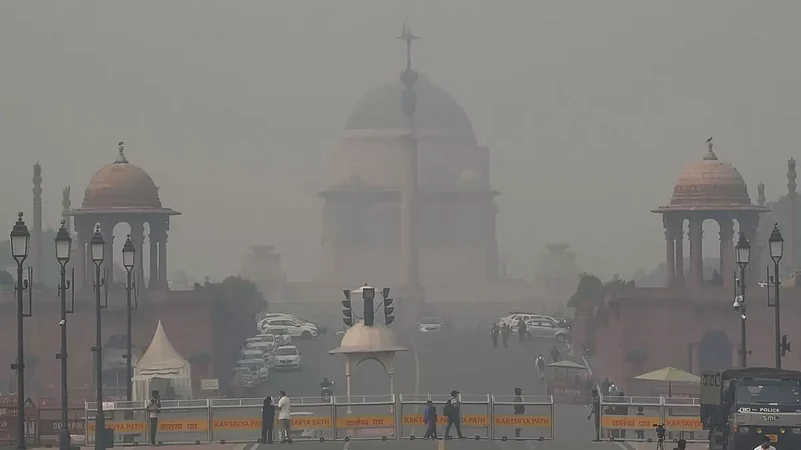Delhi continues to gasp for breath on Wednesday as the air quality in the national capital following Diwali bash pushed the air quality index (AQI) to the cusp of the deep red “severe” zone.
Delhi continued to reel under the thick layer of smog two days after Diwali as the remnants from Sunday’s unfettered firecracker-burning trapped in the city’s air.
On Tuesday Delhi’s 24-hour average air quality index (AQI) was recorded 397, a shade below the severe zone (which starts at a reading of 401) and significantly worse than 358 on Monday, which in turn was much worse than 218 on Diwali evening (Sunday).
Delhi is reckoning with a crisis purely of its making, as residents burnt firecrackers relentlessly on Diwali evening in petulant disregard of the Supreme Court’s directives and pushed the city’s air pollution up to noxious levels, overriding even favourable weather conditions. This meant that the city ended up squandering one of the best run-ups it had to Diwali in recent memory, and residents were left with pollution levels that were among the worst in recent years.
Delhi’s PM2.5 concentration at 4pm on Sunday was 45.6µg/m³, below India’s safe standard of 60µg/m³. However, smoke from firecrackers propelled this value to 550.8µg/m³ at midnight, nearly 10 times above the safe limit.
On Tuesday, Delhi’s PM2.5 peaked concentration peaked at 342µg/m³ at 12 am.
With winds still blowing in from the northwest and bringing in smoke from burning paddy fields in Punjab and Haryana, Delhi’s pollution levels are unlikely to relent, especially with calm speeds and dipping temperatures, warned meteorological experts.
Officials in Punjab recorded 1,776 farm fires on Tuesday, an uptick from 1,624 on Monday. The agrarian state, which burns more farm fires than any other state before the winter cropping season, has now recorded 28,117 blazes so far. Punjab recorded 49,922 fires between September 15 and November 30 last year.
Experts from the India Meteorological Department (IMD) said there won’t be a significant change in the city’s weather over the next three days, with low temperatures and calm winds early in the morning. Between noon and 5pm over the next three days, Delhi should continue to see an average wind speed of 6-8km/hr, it said, speeds that won’t be enough to scatter and disperse pollutants.
The dropping temperatures didn’t help the city’s cause.
Delhi’s maximum temperature was 25.9°C on Tuesday — three below normal, while the minimum was 12°C, two below normal.
The Met department’s forecast for Wednesday shows that while the city’s maximum should remain around 26°C, the minimum should drop down to 11°C by Wednesday.
















